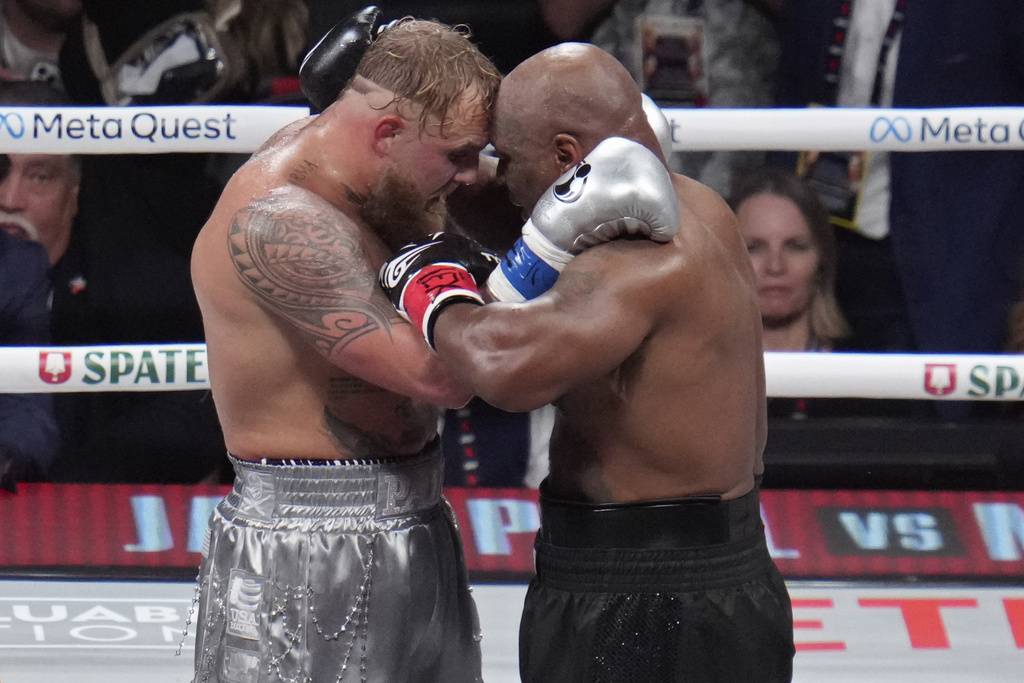Netflix Faces Streaming Issues During Live Tyson vs. Paul Fight \ Newslooks \ Washington DC \ Mary Sidiqi \ Evening Edition \ Netflix’s first attempt at streaming a live sports event, the fight between Jake Paul and Mike Tyson, was overshadowed by widespread streaming issues. Fans reported buffering, outages, and delays during the highly anticipated event, with 85,000 complaints logged on Down Detector. Despite the glitches, Netflix claimed the event reached 60 million viewers worldwide and peaked at 65 million concurrent streams, making it the platform’s largest sports broadcast.
Netflix’s Live Sports Debut: Quick Looks
- Event Overview: Jake Paul and Mike Tyson faced off in an eight-round exhibition bout at AT&T Stadium in Texas, streamed live on Netflix.
- Technical Problems: Fans encountered significant buffering and outages, with 85,000 complaints logged during the fight.
- Massive Viewership: Netflix reported 60 million viewers globally, peaking at 65 million concurrent streams.
- Co-Main Event: Katie Taylor retained her super lightweight championship against Amanda Serrano in a highly contested decision.
- Platform Test: Netflix used the fight as a test for future live sports broadcasts, including upcoming NFL and WWE events.
- Awkward Moment: A pre-fight locker room segment accidentally revealed Tyson’s bare backside, creating a viral moment online.
Deep Look
Streaming Problems and Viewer Frustration
The event, streamed live from AT&T Stadium in Arlington, Texas, was expected to be a showcase for Netflix’s capabilities as it expands into live sports. Instead, it was plagued by technical issues that left fans frustrated. Social media platforms like Twitter/X and Bluesky were flooded with complaints about buffering and service interruptions, with some fans unable to access the stream at all.
Down Detector, a website that monitors online service disruptions, logged approximately 85,000 complaints during the fight, underscoring the scale of the problems. Viewers vented their frustration online, questioning whether Netflix was prepared to handle the demands of live sports streaming.
Highlights from the Tyson-Paul Bout
Despite the streaming issues, the fight delivered plenty of action. The eight-round exhibition featured two-minute rounds instead of the standard three and concluded with Jake Paul defeating the 58-year-old Tyson by unanimous decision.
Paul, who rose to fame as a YouTuber before turning to boxing, extended his winning streak in front of a global audience. For Tyson, the fight marked another chapter in his late-career ventures into exhibition matches, though his performance was overshadowed by the technical difficulties surrounding the event.
Impressive Viewership Numbers
The co-main event, featuring Katie Taylor and Amanda Serrano, also drew significant attention. Taylor retained her undisputed super lightweight championship in a controversial decision that captivated nearly 50 million households globally. Netflix announced plans to release additional viewership statistics, including total audience reach, in the coming week.
A Test for Future Sports Offerings
The Tyson-Paul fight served as a crucial test for Netflix’s ambitions in live sports streaming. The platform, known primarily for its on-demand programming, is making a strategic pivot to include live events as part of its offerings. This shift comes amid increased competition in the streaming market and a push to attract and retain subscribers.
Pre-Fight Blunders and Viral Moments
Adding to the chaos, the event’s pre-fight coverage included an unexpected and awkward moment involving Mike Tyson. During a locker room interview, Tyson walked away wearing only a jockstrap, inadvertently exposing his bare backside to viewers.
The moment quickly went viral, sparking a mix of amusement and criticism online. While some fans found humor in the incident, others questioned Netflix’s decision to include it in the broadcast. The streaming giant later made light of the mishap on social media, turning it into a talking point for the event.
A Mixed Debut
For fans, the experience was a reminder of the growing pains involved in adapting a platform built for on-demand content to the demands of live broadcasting. For Netflix, it was a learning experience—and an opportunity to refine its approach ahead of its future sports offerings.
Lessons for Netflix’s Sports Strategy
Netflix’s move into live sports is part of a broader strategy to diversify its content offerings and compete with traditional broadcasters and rival streaming platforms. The Tyson-Paul fight was intended to serve as a proof of concept for this shift, showcasing Netflix’s ability to handle large-scale live events.
As Netflix prepares to broadcast NFL games and WWE events, the stakes are higher than ever. These high-profile broadcasts will be critical in determining whether the platform can establish itself as a major player in live sports.
Netflix Faces Streaming Netflix Faces Streaming







